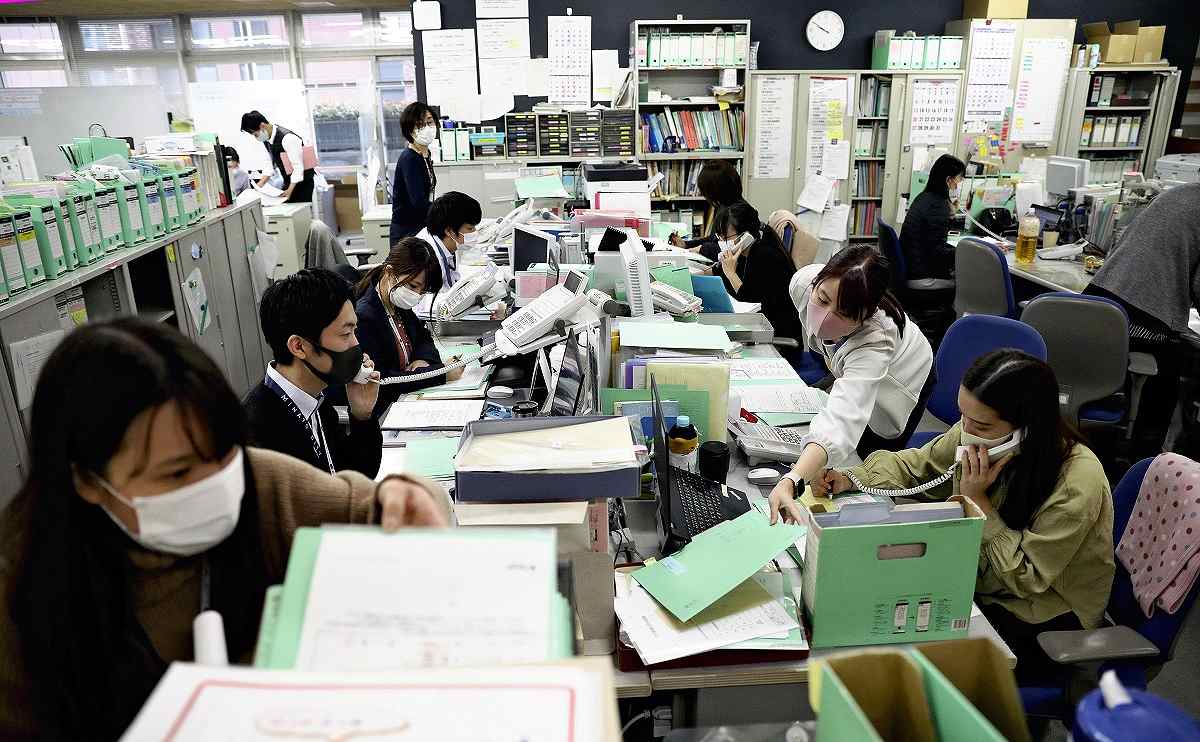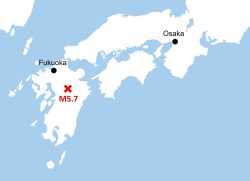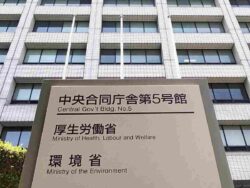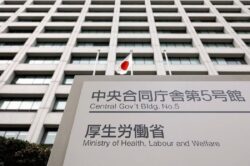
Public health nurses and other staff at the Minato Public Health Center in Minato Ward, Tokyo, engage in such such tasks as arranging for hospitalization and monitoring the condition of infected people.
14:53 JST, January 22, 2021
Staff at public health centers in Tokyo are again struggling with increased workloads after the government declared a second state of emergency due to the rise in novel coronavirus cases. In addition to such tasks as monitoring people’s health, the staff at these centers are busy around the clock trying to locate hospitals with openings for people infected with the virus. Many say the current system can no longer handle the situation.
■ Minato Ward
On the morning of Jan. 12, after a three-day weekend, about 30 staff, including public health nurses, were making calls from the Minato Public Health Center in Minato Ward, Tokyo, to medical institutions in that ward and elsewhere.
“We’ve been trying to find hospitals to admit four people since last night,” said Hirofumi Ninomiya, 48, the head of the center’s health promotion section. He said he had given up the previous day’s holiday and come to work instead.
In the office there was a whiteboard with magnetic name cards for more than 10 infected people, as part of efforts to organize their hospitalizaiton or accomodation.
“Through November last year, we put all the names of reported people on the board,” Ninomiya said. “But now there are so many reports, there isn’t enough space to put up all the names, even though we use the back of the whiteboard as well.”
During the first wave of infections last spring, the center received 82 infection reports a week during the peak period. This increased to 412 a week at the end of last year and reached 776 on Jan. 10. There have been days when the center was unable to help up to 20 people find spots in hospitals or accommodation facilities.
Nurses keep files of infected people at hand, applying sticky labels the size of business cards. Red labels indicate people who must be immediately addressed, yellow those who must be addressed as quickly as possible and blue people who were asymptomatic, mainly young people.
Since the end of last year, the center has prioritized its responses based on the information — such as symptoms, pre-existing conditions and people’s professions — included in the medical files.
The health center staff contacts each person to decide whether they should be admitted to the hospital, go to an accommodation facility or rest at home.
“I hope the medical institutions that actually handle the patients will determine their hospitalization needs in the future, because the current system mediated by public health centers creates a delay when dealing with emergencies,” said Kayo Matsumoto, 52, the director general of the public health center. “We can no longer handle asymptomatic youths the same way we handle people who are at a higher risk of becoming severely ill.”
■ Sumida Ward
On the afternoon of Jan. 14, a nurse made a call from a public health center at the Sumida Ward Office building to a male part-timer in his 40s of the same ward who had tested positive for the virus on the previous day. The nurse asked the infected individual: “Are you undergoing treatment for any condition or disease? Do you have any allergies?”
In November last year, the Sumida Ward Office created an eight-item checklist that included inquiries about coughing, pre-existing conditions and difficulty breathing. Itaru Nishizuka, 50, the head of the public health center, said, “This measure is aimed at improving the efficiency of inquiries and preventing severely ill patients from being overlooked.”
In the ward, four people infected with the virus were resting at home in early November last year. This figure had surged to 244 as of Jan. 13. The growing number has led to more elderly people having to wait at home until an available hospital can be found.
As the Tokyo metropolitan government has asked for patients aged 70 and older to be admitted to hospitals in principle, they have generally not been sent to accommodation facilities.
“There’s a dichotomy in which young patients with mild symptoms stay at accommodation facilities while elderly people at higher risk of severe illness wait at home,” Nishizuka said.
To address the issue, the ward office made housecalls by nurses available for patients recuperating at home from Jan. 8. Visiting nurses ask about health conditions to ascertain indications of pneumonia and other diseases.
However, the sense of urgency felt among the general public amid the first wave last spring seems to have diminished — even among some infected people. In autumn last year, the public health center was unable to contact a man in his 40s who was supposed to be under home care, so staff paid him a visit. When the man returned to his home, he said, “I was out at a pachinko parlor.”
Recently, more and more people are being tested at their own expense, and some test positive. In many cases such people don’t pick up phone calls from public health centers, or they give the centers an incorrect phone number. The centers need to be able to contact them even in these circumstances. As such methods yield more positive test results, health center staff have been busier with efforts to get in touch, and it has reached the point where they are working at all hours of the day, seven days a week.
The center has the additional burden of dealing with people taking tests at their own expense, Nishizuka said. “The staff are exhausted.”
"Society" POPULAR ARTICLE
-

M4.9 Earthquake Hits Tokyo, Neighboring Prefectures
-

M7.5 Earthquake Hits Northern Japan; Tsunami Waves Observed in Hokkaido, Aomori and Iwate Prefectures
-

Tsukiji Market Urges Tourists to Avoid Visiting in Year-End
-

Israeli Tourists Refused Accommodation at Hotel in Japan’s Nagano Pref., Prompting Protest by Israeli Embassy and Probe by Prefecture
-

M5.7 Earthquake Hits Japan’s Kumamoto Pref., Measuring Upper 5 Intensity, No Tsunami Expected
JN ACCESS RANKING
-

Keidanren Chairman Yoshinobu Tsutsui Visits Kashiwazaki-Kariwa Nuclear Power Plant; Inspects New Emergency Safety System
-

Imports of Rare Earths from China Facing Delays, May Be Caused by Deterioration of Japan-China Relations
-

University of Tokyo Professor Discusses Japanese Economic Security in Interview Ahead of Forum
-

Japan Pulls out of Vietnam Nuclear Project, Complicating Hanoi’s Power Plans
-

Govt Aims to Expand NISA Program Lineup, Abolish Age Restriction























